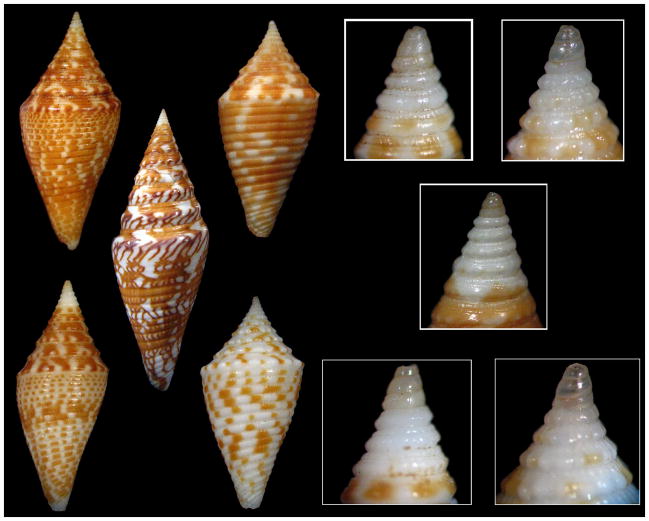Figure 4.
An illustration of the “miniexcelsus -like complex”. Shown are five specimens (left five) and close ups of their respective protoconchs (right five). Left, top and bottom: Conus miniexcelsus , middle: Conus excelsus , and right top and bottom: Conus acutangulus. Although the shells are different in pattern and size at maturity, note the similar purplish brown translucent protoconchs, followed by the ivory white early teleoconch whorls before the regular shell pattern is initiated. Typical Conus acutangulus(top right) and the “deep-water form” (bottom right) are both distinctly more nodulose while there is a striking similarity between Conus excelsusand Conus miniexcelsusin their protoconchs and early teleoconch whorls.

